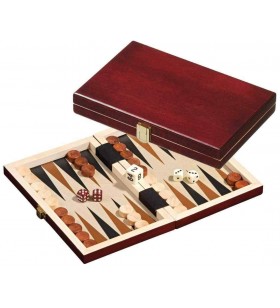- SCHAAK
- DENKSPELLEN
- GO
- BRIDGE, TAROT & KAARTEN
- POKER & CASINO
- PUZZLES & BRAINBREKERS
- DARTS
Megaminx Moyu Meilong Magnetic
 Livraison sous 48 heures via Bpost*
Livraison sous 48 heures via Bpost*
Gratis levering vanaf €69 (België, Frankrijk, Nederland, Luxemburg, Duitsland)
 U kunt uw bestelling annuleren
U kunt uw bestelling annuleren
Veertien dagen lang!
 Beveiligde betalingen
Beveiligde betalingen
Alle betaalkaarten geaccepteerd.
Specifieke referenties
16 ander product
Edouard - Le calcul aux échecs à la portée de tous
Romain Edouard, auteur de qualité et joueur de haut niveau, nous propose un ouvrage sur le calcul aux échecs, lorsqu'il s'agit de mettre votre adversaire échec et mat.
Au menu, 8 chapitres; dans les trois premiers, des exercices tactiques standards, avant que les choses se compliquent. Au quatrième, il vous faudra enfermer le roi adverse, au cinquième, votre tâche sera de l'emporter en éliminant le défenseur clé, dans le sixième, c'est une double menace qui fera la différence, dans le huitième, des sacrifices et enfin dans le huit et dernier chapitre on retrouvera quelques problèmes différents, un peu de tout. Il est conseillé d'utiliser le livre dans l'ordre chronologique, car la complexité des exercices s'accroît au fil de l'ouvrage. Au total 276 exercices. 130 pages.
Doosje voor schaakstukken
Mooie houten doos waarin je je stukken kunt bewaren en beschermen als je je spel opbergt of als je het verplaatst. De grootte van de doos maakt het mogelijk om een complete set stukken op te bergen met een maximale koningsgrootte van 87 mm (standaard maat). De doos wordt gesloten met een deksel dat voorzien is van kleine magneten.
afmeting : 225 x 142 x 83 mm
Roulette set compleet in zwarte luxe houten opberg kist
| Roulette set compleet in zwarte luxe houten opberg kist. 1 x roulette bak 36 cm, roulettekleed (130 x 90 cm) 200 fishes 11.5 gram en harkje. |

 Français
Français Nederlands
Nederlands English
English






















